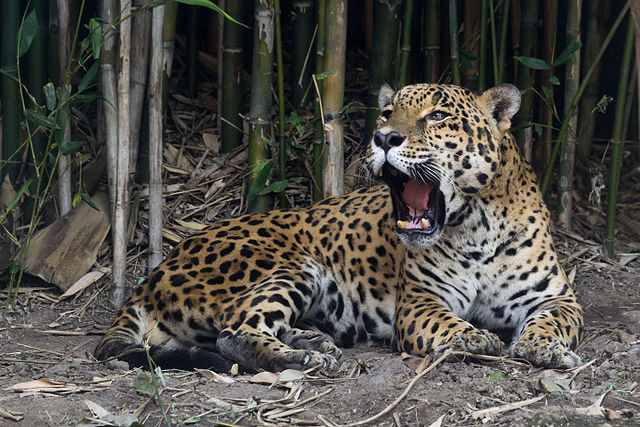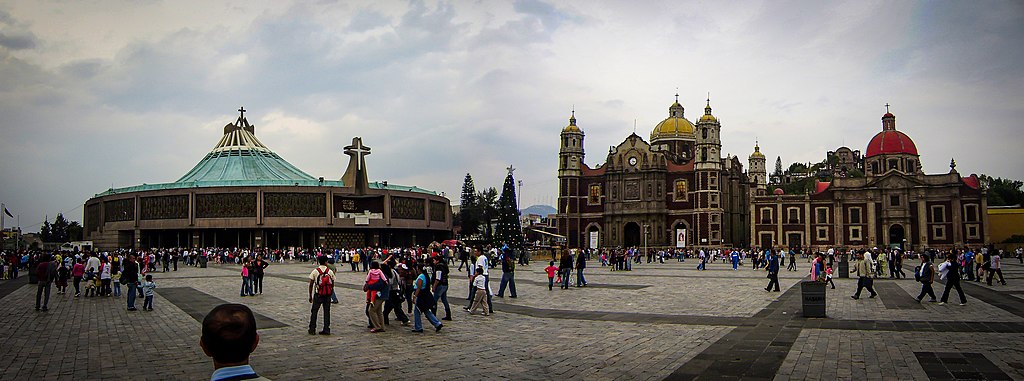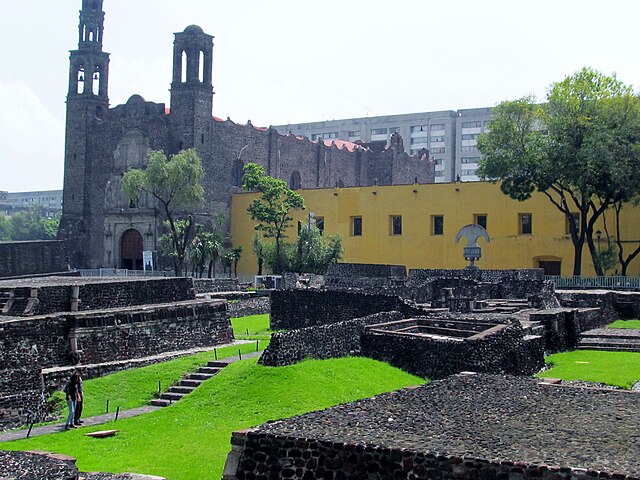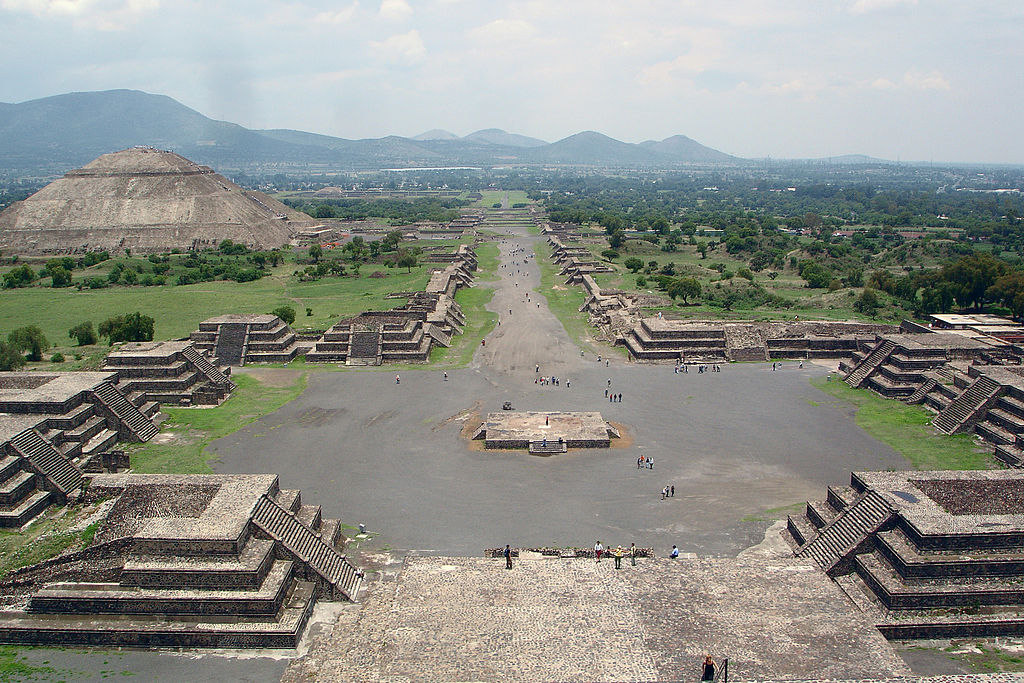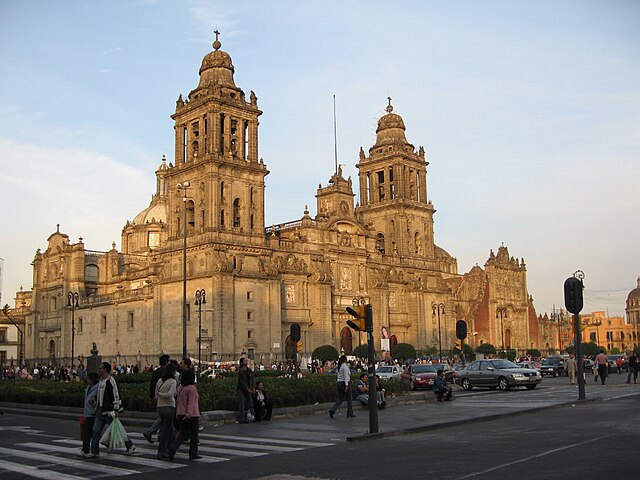Layered in 1,000 years of culture and history, Mexico City was once the center of the Aztec Empire. Here you can find ancient ruins, prehistoric carvings, Spanish colonial cathedrals, and one of the largest city squares in the world, the Zocalo.
México D.F.
Chapultepec, more commonly called the "Bosque de Chapultepec" (Chapultepec Forest) in Mexico City, one of the largest city parks in the Western Hemisphere, measuring in total just over 686 hectares (1,695 acres). Centered on a rock formation called Chapultepec Hill, one of the park's main functions is to be an ecological space in the vast megalopolis. It is considered the first and most important of Mexico City's "lungs", with trees that replenish oxygen to the Valley of Mexico.
The Chapultepec Zoo is the most visited attraction of the park, especially on Sundays when many Mexico City families come; it is estimated that half of all park visitors come to the zoo. Some of the most important Mexican species at the facility include a rabbit native to only a few volcanoes in Mexico, zacatuche (or teporingo), the Mexican wolf, ocelot, jaguar and ajolote. Today, it has 16,000 animals of 270 species, separated into four sections according to habitat: tropical forest, temperate forest, desert and grassland. About one third of the animals are native to Mexico.
National Museum of Anthropology, considered to be one of the greatest archeological museums in the world. The museum has a number of antecedents beginning from the colonial period, but the current institution was created in the 1960s with the building and grounds designed by architect Pedro Ramirez Vazquez. This museum has an area of 44,000 square meters and 25 exhibit halls with sections devoted to each of the major pre-Hispanic civilizations in Mexico including the Aztec, Maya, Toltec and Olmec.
Chapultepec Castle (Spanish: Castillo de Chapultepec) is located on top of Chapultepec Hill. The name Chapultepec stems from the Nahuatl word chapoltepec which means "at the grasshopper's hill". It is located in the middle of Chapultepec Park in Mexico City at a height of 2,325 meters (7,628 ft) above sea level. The site of the hill was a sacred place for Aztecs, and the buildings atop it have served several purposes during its history, including that of Military Academy, Imperial residence, Presidential home, observatory, and presently, the National Museum of History.
México D.F.
The Basilica of Our Lady of Guadalupe (Spanish: Basilica de Nuestra Senora de Guadalupe) is a Roman Catholic church, basilica and National shrine of Mexico in the north of Mexico City. The shrine was built near the hill of Tepeyac where Our Lady of Guadalupe is believed to have appeared to Saint Juan Diego Cuauhtlatoatzin. This site is also known as La Villa de Guadalupe or, in a more popular sense, simply La Villa, as it has several churches and related buildings.
The new Basilica houses the original tilma (or cloak) of Juan Diego, which holds the image of Our Lady of Guadalupe. One of the most important pilgrimage sites of Catholicism, the basilica is visited by several million people every year, especially around 12 December, Our Lady of Guadalupe's Feast day.
The Monument to the Revolution (Spanish: Monumento a la Revolución) is a landmark and monument commemorating the Mexican Revolution. It is located in Plaza de la República, which crosses at the heart of the major thoroughfares Paseo de la Reforma and Avenida de los Insurgentes in downtown Mexico City.
Palacio de Bellas Artes (Palace of Fine Arts) is a prominent cultural center in Mexico City, Mexico. It is located on the west side of the historic center of Mexico City next to the Alameda Central park. The building's initial design and construction was undertaken by Italian architect Adamo Boari in 1904, but complications stopped all work in 1913. Construction resumed in 1932 under Mexican architect Federico Mariscal and was completed in 1934. The exterior of the building is primarily Neoclassical and Art Nouveau, and the interior is primarily Art Deco. The building is best known for its murals by Diego Rivera, David Alfaro Siqueiros and others, as well as the many exhibitions and theatrical performances its hosts, including the Ballet Folklorico de Mexico.
Teotihuacan
The Pyramid of the Sun is the largest building in Teotihuacan, believed to have been constructed about 200 CE, and one of the largest in Mesoamerica. Found along the Avenue of the Dead, in between the Pyramid of the Moon and the Ciudadela, and in the shadow of the massive mountain Cerro Gordo, the pyramid is part of a large complex in the heart of the city. The Pyramid of the Moon is the second largest pyramid in modern-day San Juan Teotihuacán, Mexico, after the Pyramid of the Sun. It is located in the western part of the ancient city of Teotihuacan and mimics the contours of the mountain Cerro Gordo, just north of the site. The Temple of the Feathered Serpent is the modern-day name for the third largest pyramid at Teotihuacan. (*How to get here:* Autobuses del Norte, Metro Line 5. Then, 45 minute bus ride to Pyramids. Bus depature from North Bus Terminal)
Centro, México D.F.
The historic center of Mexico City (Spanish: Centro Historico de la Ciudad de Mexico), also known as the Centro or Centro Historico, is the central neighborhood in Mexico City, focused on Zocalo or main plaza and extending in all directions for a number of blocks, with its farthest extent being west to the Alameda Central. The Zocalo is the largest plaza in Latin America. It can hold up to nearly 100,000 people.
The Palacio Nacional borders the entire east side of the Zocalo and contains the offices of the President of Mexico, the Federal Treasury, the National Archives as wells as murals depicting pre-Hispanic life and a large mural filling the central stairway depicting the entire history of the Mexican nation from the Conquest on.
The Templo Mayor archeological site and museum, is the center of the ancient teocalli, located now just northeast of the Zocalo. It was demolished by Hernan Cortes in the 1520s and its location forgotten. The exact site was determined in the beginning of the 20th century, but the decision to excavate was not made until 1978, when electrical workers chanced upon an eight-ton stone disk depicting the Aztec goddess Coyolxauhqui. Excavation unearthed a pyramid built in multiple layers. This is the spot where, according to legend, the Aztecs saw their sign to settle from their wanderings, an eagle perched on a nopal cactus with a snake in its beak, which is still the symbol of Mexico today.
The Metropolitan Cathedral, dedicated to the Assumption of the Most Blessed Virgin Mary, occupies the north end of the Zocalo. The site originally was part of the Aztec Sacred Precinct (called the Teocalli) and contained the main tzompantli, or rack for the skulls of sacrifice victims. The first church was erected between 1524 or 1526 and 1532 and was elevated to the rank of cathedral on 2 September 1530 by Pope Clement VII.
The Museo Nacional de Arte (MUNAL) is the Mexican National Art Museum, located in the historical center of Mexico City. It houses a collection representing the history of Mexican art from the late pre-Hispanic era to the early 20th century. As the center of the ancient Aztec Empire and the seat of power for the Spanish colony of New Spain, the Centro Historico contains most of the city's historic sites from both eras as well as a large number of museums.
México D.F.
The National Autonomous University of Mexico (Spanish: Universidad Nacional Autonoma de Mexico, - literal translation: Autonomous National University of Mexico, UNAM) is the largest university in Latin America. As a public research university in Mexico City, the UNAM is widely regarded by many university world rankings as the leading university of the Spanish-speaking world. Besides being one of the most recognized universities in Latin America and the Spanish-speaking world in general, its campus is one of the largest and most artistically detailed. It is a UNESCO World Heritage site that was designed by some of Mexico's best-known architects of the 20th century.
The Parque Mexico (English: lit. "Mexico Park"), also known as the Parque San Martin, is a large urban park located in Colonia Hipodromo in the Condesa area of Mexico City. It is recognized by its Art Deco architecture and decor as well as being one of the larger green areas in the city.
The fountain of Cibeles in Mexico City is a bronze replica of the fountain located in the Plaza de Cibeles in Madrid that was built during the reign of Charles III by architect Ventura Rodriguez between 1777 and 1792. The Mexican version is located at a traffic circle where Oaxaca, Durango, Medellín and El Oro streets converge in Colonia Roma.
México D.F.
The Angel of Independence, most commonly known by the shortened name El Angel and officially known as Monumento a la Independencia ("Monument to Independence"), is a victory column on a roundabout on the major thoroughfare of Paseo de la Reforma in downtown Mexico City. Paseo de la Reforma is a wide avenue that runs diagonally across the heart of Mexico City.
Xochimilco Ecological Park and Plant Market is a natural reserve or park, with a thirteen hectare plant market, the largest in Latin America. The park and market are located in the southern Mexico City borough of Xochimilco, about 23 km south of the historic center of the city. The park was inaugurated in 1993, on chinampas (artificial lake islands) which had been previously declared as part of a World Heritage site.











